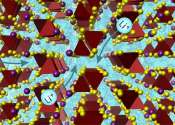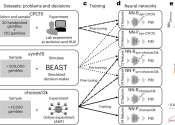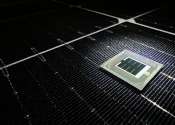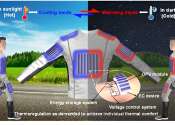Discovery of new Li ion conductor unlocks new direction for sustainable batteries
One of the grand challenges for materials science is the design and discovery of new materials that address global priorities such as Net Zero.
Feb 15, 2024
0
111
Science is the academic journal of the American Association for the Advancement of Science and is one of the world's top scientific journals. The peer-reviewed journal, first published in 1880, is circulated weekly and has a print subscriber base of around 130,000. Because institutional subscriptions and online access serve a larger audience, its estimated readership is one million people. The major focus of the journal is publishing important original scientific research and research reviews, but Science also publishes science-related news, opinions on science policy and other matters of interest to scientists and others who are concerned with the wide implications of science and technology. Unlike most scientific journals, which focus on a specific field, Science and its rival Nature cover the full range of scientific disciplines. Science's impact factor for 2010 was 31.364 (as measured by the Institute for Scientific Information).
Energy & Green Tech

One of the grand challenges for materials science is the design and discovery of new materials that address global priorities such as Net Zero.
Feb 15, 2024
0
111
Hi Tech & Innovation

AI systems, such as GPT-4, can now learn and use human language, but they learn from astronomical amounts of language input—much more than children receive when learning how to understand and speak a language. The best ...
Feb 1, 2024
0
27
Energy & Green Tech

In a bid to meet growing food production and energy needs in low- and middle-income countries, solar-powered groundwater irrigation is rapidly gaining ground. More than 500,000 solar pumps have been installed in south Asia ...
Jan 24, 2024
0
41
Engineering

A research team led by Lawrence Berkeley National Laboratory (Berkeley Lab) has developed "supramolecular ink," a new technology for use in OLED (organic light-emitting diode) displays or other electronic devices. Made of ...
Jan 22, 2024
0
34
Business

Researchers at the Center for Cognitive Science at TU Darmstadt and hessian.AI have investigated the properties of behavioral economic theories automatically learned by AI.
Jan 12, 2024
0
48
Engineering

Scientists have unveiled a roadmap for bringing perovskite/silicon tandem solar cells to market, paving the way for a future powered by abundant, inexpensive clean energy in Saudi Arabia and the world.
Jan 11, 2024
0
109
Machine learning & AI

Human–computer gaming has a long history and has been a main tool for verifying key artificial intelligence technologies. The Turing test, proposed in 1950, was the first human–computer game to judge whether a machine ...
Dec 29, 2023
0
14
Business

A trio of economists and financial analysts, two from Yale University and the other the University of Chicago, has conducted a case study of a nationwide cryptocurrency experiment to better understand why such a monetary ...
Engineering

A team of engineers, materials scientists and chemists at Nankai University, in China, has developed a microfiber-based meta-fabric that provides full-day thermoregulation of body temperature during periods of changing external ...
Energy & Green Tech

Electrolytes are key battery components that transfer charge carrying particles (i.e., ions) back and forth between two electrodes, ultimately allowing batteries to repeatedly charge and discharge. Engineering and identifying ...